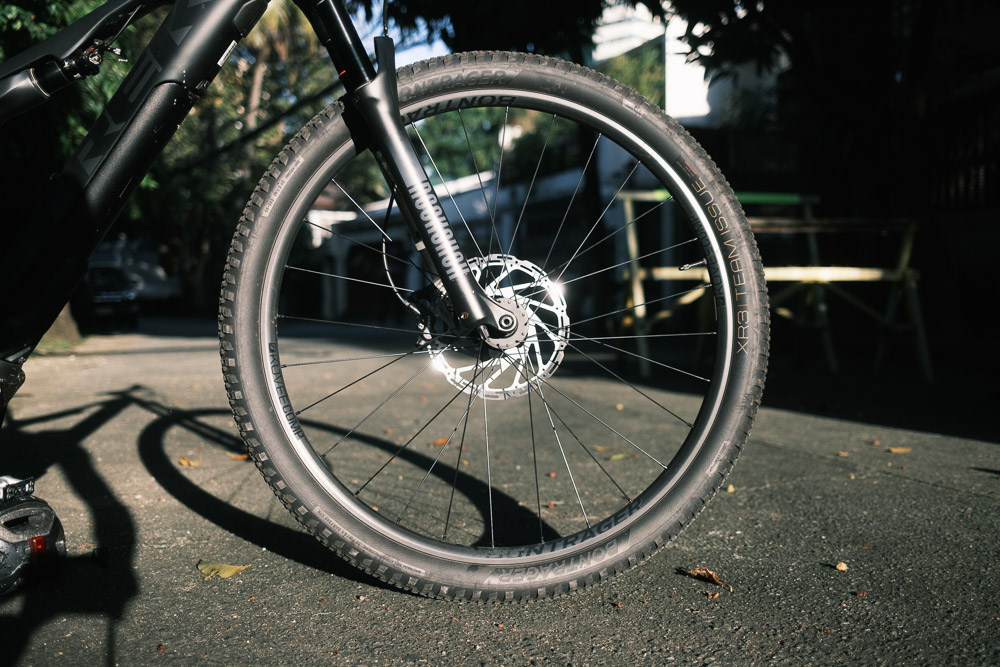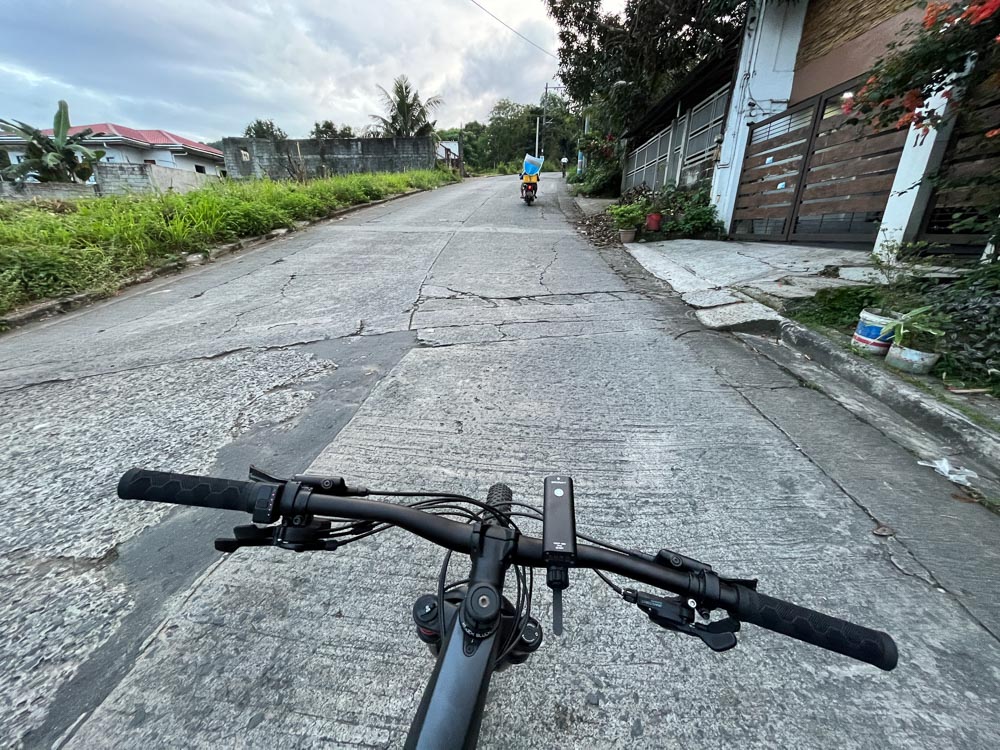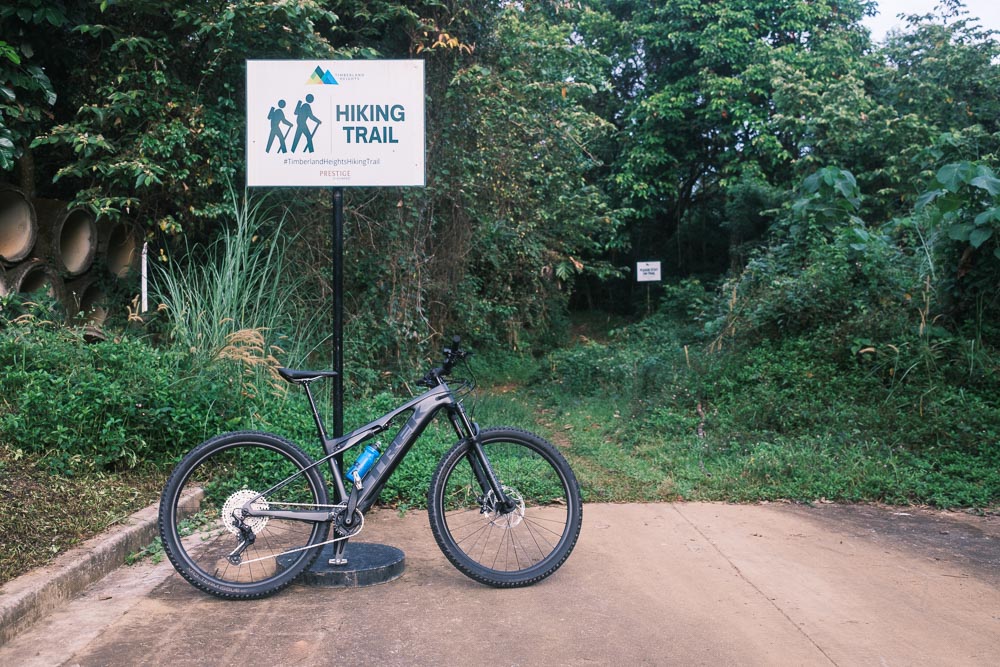
Mountain biking has gone a long way, starting out in the 1970s as a hobby of grown men racing down clunkers in Marin County, California, to becoming a global phenomenon and even an Olympic sport.
Meanwhile, Trek began in 1976 when business partners Richard “Dick” Burke and Bevil Hogg decided to start manufacturing their own bicycles. And when the mountain-biking craze swept across America, they, too, rode the wave.
Fast-forward to the present and now we have carbon-fiber frames, hydraulic disc brakes, full-suspension mountain bikes, and mid-drive e-bike motors. Each of these is a luxury on its own, so what do you get when you combine them all?
The Trek E-Caliber is the American bike company’s line of electric cross-country mountain bikes with the 9.6 being the entry-level model with an SRP of P360,000.
Yeah, that costs more than my own 2015 Toyota Wigo, so what do you get with that much money? Practically everything you could ask for in a pedal-powered two-wheeler.





The carbon-fiber frame holds together a RockShox 35 Gold RL suspension fork at the front, and the Trek IsoStrut suspension at the rear.
Pedal assistance is provided by a Fazua Evation Drive Pack consisting of a 250W mid-drive motor, powered by a 36V and 250Wh battery. The bike sits on alloy wheels with 29-inch by 2.4-inch tubeless tires so flats and potholes shouldn’t be a problem.
The drivetrain is a 12-speed Shimano Deore with a 32T chainring at the front, and a 10-51T cassette at the rear. Stopping power is provided by Tektro Orion quad-piston hydraulic brakes with massive rotors—203mm at the front, and 180mm at the rear.
Now, 18.5kg would be pretty heavy for a bicycle, but it’s as light as a feather for something this loaded. If, for some reason you’d like to ride without the electronics, removing the battery and the motor unit will shave off 1.9kg, and will also let you use the compartment for storage.




Being a mountain bike, there are switches for toggling the suspension lockout and for activating the dropper post—kind of like adjusting the height of a stool. The latter is useful when descending as it lowers the center of gravity.
The controller is mounted on the handlebars along with the brake levers and the shifters. Unlike with other e-bikes, the Fazua Remote bX forgoes a digital display for a basic interface.
There are two touch pads for adjusting the assist level and a power button in the middle. The battery level is displayed via five dots with the color of the lighting indicating the assist level.

The control system makes use of a torque sensor so the amount of pedal assistance adjusts with the effort exerted by the rider.
‘Breeze’ has a constant motor output of 100W, simulating a gentle and constant tailwind. ‘River’ delivers 210W at most for sporty riding, while ‘Rocket’ pumps out a maximum of 250W for the steepest of climbs.

These specs are a lot to take in, so allow me to explain them with my real-world experience. Riding the E-Caliber on Metro Manila roads isn’t enough as it is purpose-built for the trails. During my brief time with the e-bike, I managed to go on two long rides.
The first was at the AFP-Pestaño trail, while the second was in Timberland Heights. Both are in San Mateo, Rizal, and I’d have to travel around 20km and go up a steep incline before actually going off-road.
This was the perfect way to test the electric mountain bike—the flats for the mechanical drivetrain, the climb for the motor and the pedal assist, the trail for the suspension and the tires, and the descent for the hydraulic brakes.

The mark of an exceptional e-bike is that it holds up well even without the motor. And that’s true for the E-Caliber as it was a joy to pedal on the way to the trails, with the hubs producing that tunog mayaman when freewheeling.
While the pedal assist is much better than nothing, it wasn’t exactly the smoothest when climbing as the motor would cyclically kick in and gradually ease off. It never completely died out, but I was hoping for a more consistent output when pedaling at a given cadence.
I also noticed the assist level would suddenly change when riding with the motor on. While some e-bikes have a smart mode that automatically adjusts the assist level, this one doesn’t, so that shouldn’t be happening.



Once the pavement ended, it was time for the suspension to do its thing. I first encountered the AFP-Pestaño trail on an ATV ride with the family. The path was wide enough for four-wheelers, but there were parts that were either rocky or muddy and filled with deep puddles.
Entering from the Marikina side, I had to climb while off-road, and the Trek performed well. The pedal assist meant that I wasn’t drained once I started the trail, and it allowed me to focus more on navigating the terrain.
The suspension took all the bumps like a champ, while the hydraulic brakes and the dropper post gave me unmatched confidence when descending. Although I didn’t use the motor the entire time, the battery was almost drained by the end of the ride.





Timberland’s climb was just as brutal, but wasn’t as energy-consuming with the shorter stretch. However, the trail was more technical with some parts being singletrack. It’s wide enough for only one bike—just like most of Metro Manila’s bike lanes—filled with obstacles such as roots and foliage.
I was able to clear it with the E-Caliber, although the 29er wheels aren’t the best for tight spaces. Descending from Timberland was also no problem in spite of the bends, thanks to my experience in Morgan Territory.

I had a blast with the E-Caliber, yet I highly do not recommend it for commuting. Price aside, its features are overkill for simple city-riding, and the ones a good commuter needs are missing.
The frame can only accommodate a single bottle cage with no provisions at all for racks or carriers. Also, bringing the bicycle indoors is a pain with the big wheels, the narrow turning radius, and the wide handlebars.
The included charger was designed for 110V, which may cause some complications. For some reason, it broke after being plugged in the 110V outlet of my automatic voltage regulator at home.
And even after changing it with a new one, it still didn’t work. The problem was only solved when the shop lent me its transformer, as well as a new charger.


Overall, the Trek E-Caliber 9.6 is for those who love hitting the trails, but would appreciate or need the pedal assist. It’s a good bike on its own; the motor lets you conquer the steepest climbs; the suspension smoothens out bumpy terrain; and the hydraulic brakes give maximum confidence when descending.
Some like to bash e-bikes saying they’re cheating. But not everyone is as fit as an athlete, and there are those who just want to enjoy cycling without the pressure of competition. An electric bike like the E-Caliber either helps cyclists travel farther than usual or go on rides they normally can’t do.
If you happen to be able to afford this and are in the market for an electric mountain bike, you can get the Trek E-Caliber 9.6 at Dan’s Bike Shop.











Comments